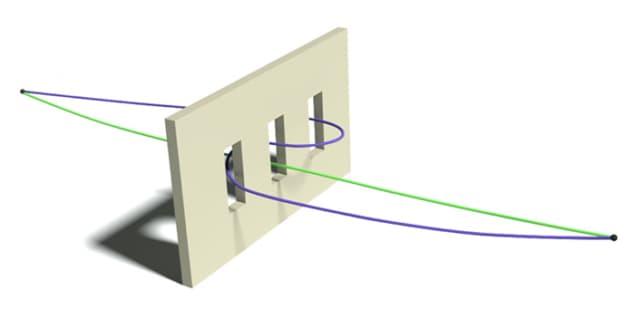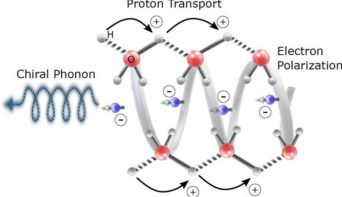
A flaw in how quantum-interference experiments are interpreted has been quantified for the first time by a team of physicists in India. Using the “path integral” formulation of quantum mechanics, the team calculated the interference pattern created when electrons or photons travel through a set of three slits. It found that non-classical paths – in which a particle can weave its way through several slits – must be considered along with the conventional quantum superposition of three direct paths (one through each of the slits). The team says the effect should be measurable in experiments involving microwave photons, and that the work could also provide insights into potential sources of decoherence in some quantum-information systems.
One of the cornerstones of quantum theory is the fact that particles can also behave as waves. This can be demonstrated by the double-slit experiment with electrons, which was once voted as the most beautiful physics experiment of all time by Physics World readers. It involves firing electrons through two adjacent slits and observing the build-up of a wave-like interference pattern on a screen on the other side of the slits. However, each particle is detected as a tiny dot within the pattern, suggesting that the particles are discrete entities too.
Physics students are taught that the double-slit pattern can be explained by treating the system as a superposition of waves that travel through one slit and waves that travel through the other slit. Although this description reproduces the pattern seen in experiments, the Japanese physicist Haruichi Yabuki pointed out in 1986 that this approach is approximate because it ignores the tiny possibility that a particle could take a non-classical path through the slits.
Quantum weaving
These non-classical paths are easier to think of with an arrangement of three slits. A particle could go through, say, the slit on its left, curve around, go back through the centre slit before turning again and emerging from the slit on the right (see figure). Now, Urbasi Sinha and colleagues at the Raman Research Institute and Indian Institute of Science in Bangalore have calculated the effect of these non-classical paths on the resulting interference pattern of such a triple slit. Using the path-integral formulation of quantum mechanics, the team looked at different combinations of slit width and slit separation for both incident photons and electrons.
In the case of electrons, the researchers worked out that the non-classical paths would have a minuscule effect on the observed pattern, which would deviate from a simple superposition by a factor of about 10–8. For visible light, this change increases to about 10–5, but this is still too small to detect. Indeed, the calculations explain why Sinha and colleagues at the University of Waterloo in Canada did not see any deviations in an optical triple-slit experiment done in 2010 (see “Quantum theory survives its latest ordeal”).
Microwaveable deviation
It turns out, however, that the deviation should rise to about 10–3 for microwave photons, and the team believes that it could be measured in an experiment using photons of wavelength 4 cm, a slit width of 120 cm and a slit separation of 400 cm. Indeed, Sinha told physicsworld.com that her team at the Raman Research Institute has already set up a microwave experiment to look for the effect, but could not comment on the preliminary results.
Such an experiment, if carried out, could provide a room-sized demonstration of the path-integral formulation of quantum mechanics – something that is normally associated with sub-atomic processes. Furthermore, understanding the role of non-classical paths in interferometer-based quantum-information systems could help physicists reduce the destructive effects of noise in these systems.
The research is described in Physical Review Letters.



